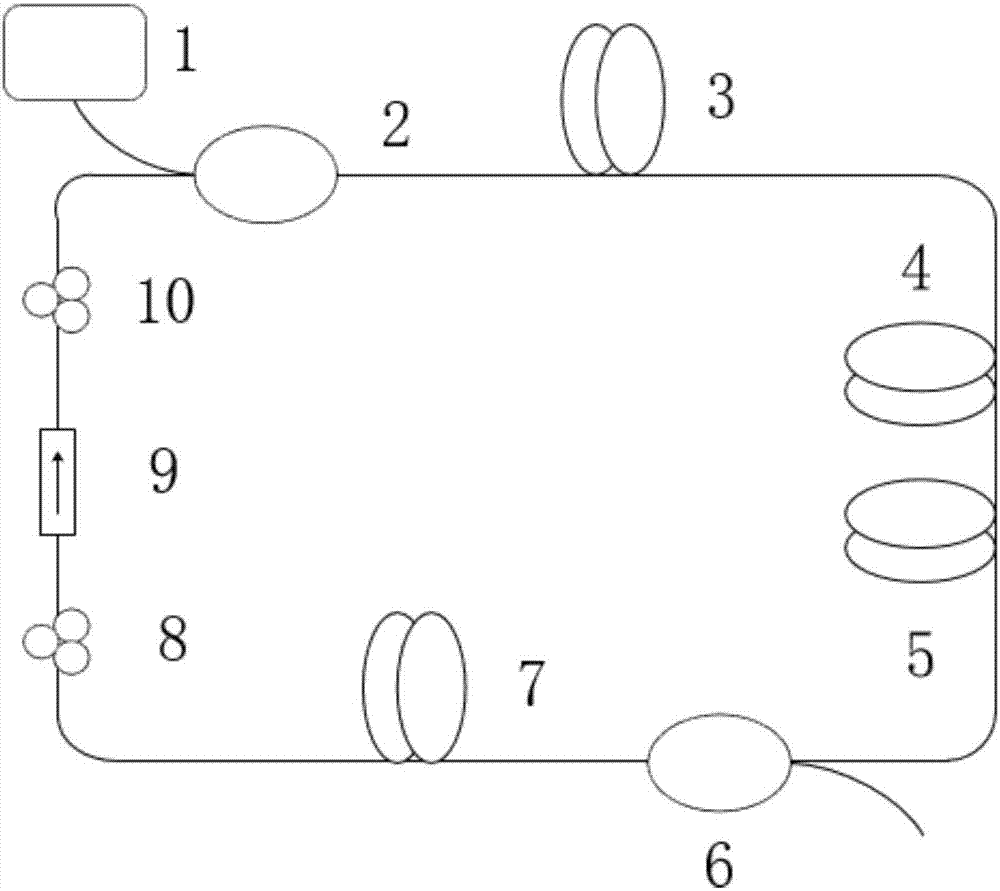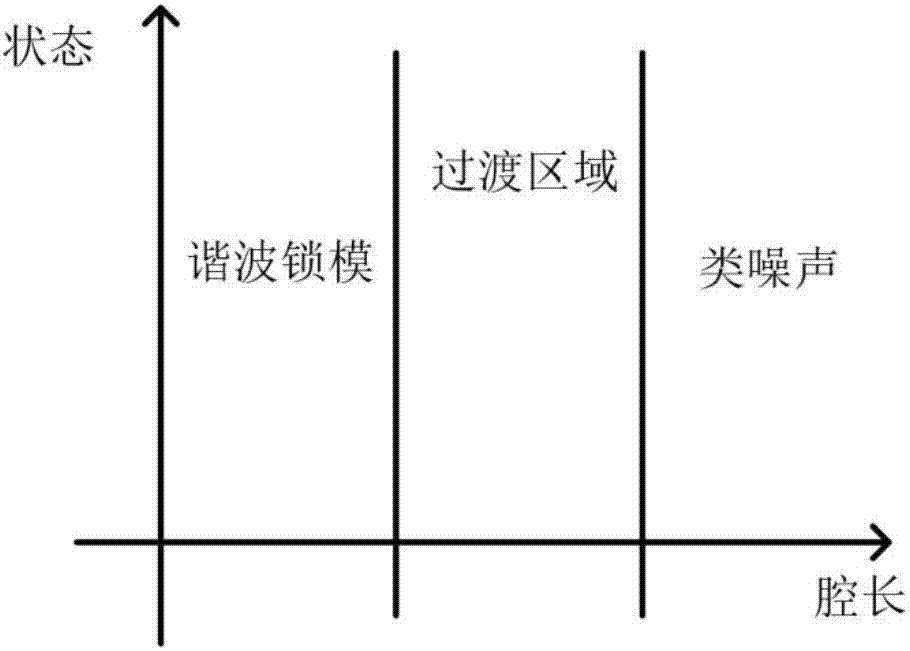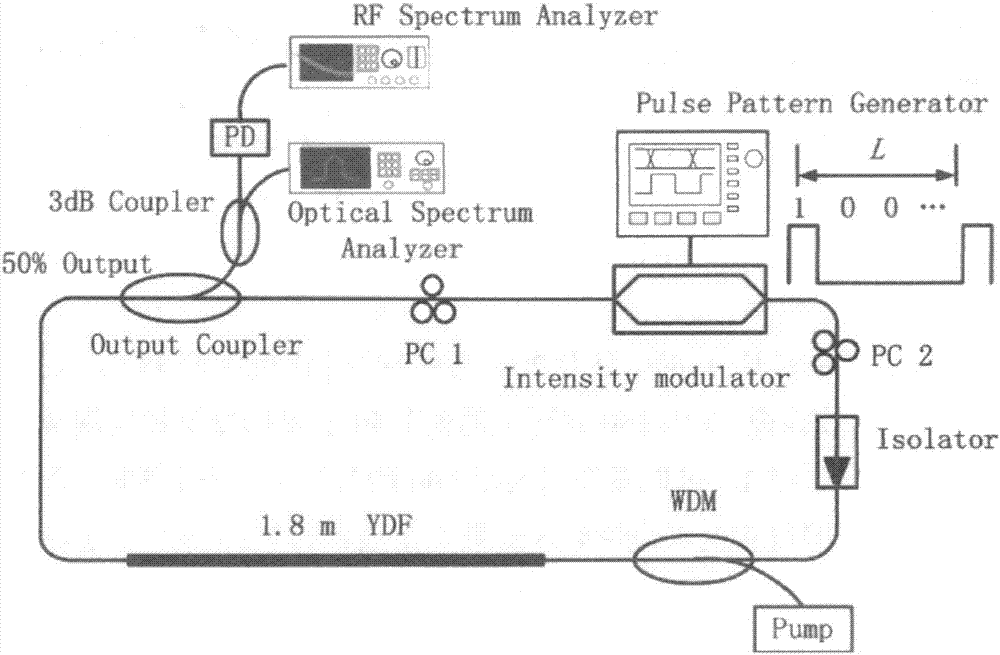Noise-like and high-frequency harmonic mode-locking coexisting dual-wavelength thulium-doped fiber laser
A fiber laser, high-frequency harmonic technology, applied in lasers, phonon exciters, laser components, etc., can solve the problem of not being able to output high repetition frequency and high pulse energy at the same time, and achieve the effect of mode competition
- Summary
- Abstract
- Description
- Claims
- Application Information
AI Technical Summary
Problems solved by technology
Method used
Image
Examples
Embodiment Construction
[0029] All the features disclosed in this specification, except mutually exclusive features and / or steps, can be combined in any way.
[0030] Combine below Figure 1 ~ Figure 2 The present invention will be described in detail.
[0031] Such as Figure 1 ~ Figure 2 As shown, the dual-wavelength thulium-doped fiber laser co-existing with noise-like and high-frequency harmonic mode-locking provided by the present invention includes a laser diode 1, and the laser diode 1 is sequentially connected with an end-to-end pumping beam combiner 2 and a thulium-doped fiber laser. Optical fiber 3, single-mode optical fiber 4, dispersion compensation optical fiber 5, coupler 6, polarization-maintaining optical fiber 7, and polarization-dependent isolation controller; the polarization-dependent isolation controller is a polarization controller-8, polarization-dependent isolation controller connected to polarization-maintaining optical fiber 7 in sequence an isolator 9 and a polarization c...
PUM
 Login to View More
Login to View More Abstract
Description
Claims
Application Information
 Login to View More
Login to View More - Generate Ideas
- Intellectual Property
- Life Sciences
- Materials
- Tech Scout
- Unparalleled Data Quality
- Higher Quality Content
- 60% Fewer Hallucinations
Browse by: Latest US Patents, China's latest patents, Technical Efficacy Thesaurus, Application Domain, Technology Topic, Popular Technical Reports.
© 2025 PatSnap. All rights reserved.Legal|Privacy policy|Modern Slavery Act Transparency Statement|Sitemap|About US| Contact US: help@patsnap.com



